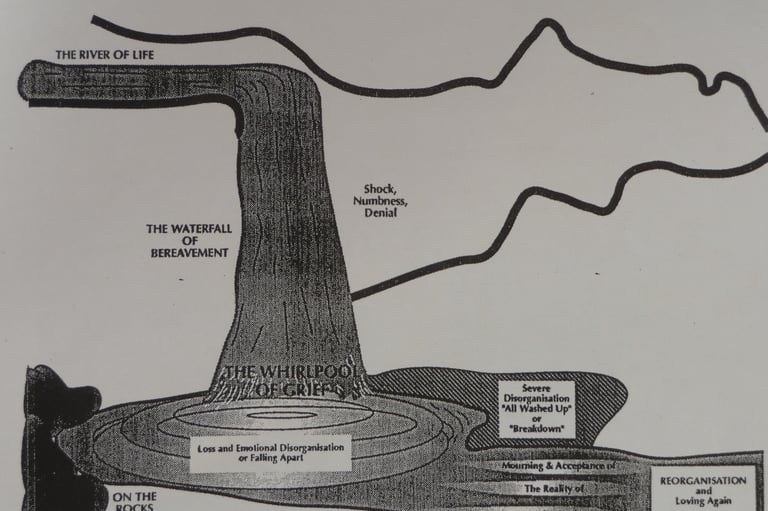Support in Grief offers expertise and compassion, ensuring that every individual navigating grief receives tailored support and guidance .
Grief Counselling Services
Children and young person bereavement counselling
Adult bereavement counselling
We support children and young people (ages 4–18) to safely express their grief and emotions.
One-to-one sessions take place in a calm, neutral space — ideal if it’s hard to open up at home. Children are guided to explore their feelings, feel reassured, and understand that grief is a natural process.
We use creative, age-appropriate approaches like play, art, talking and family work to build emotional resilience and prevent long-term struggles.
Sessions are 1 hour and can be one-to-one, face-to-face, or online via video.
Grief after a loss can affect every part of life — emotionally, physically, and mentally.
We provide a safe, supportive space to talk openly, reflect, and begin to heal.
Whether your loss was recent or years ago, counselling can help you process what’s happened, understand your grief, and find new ways to cope.
Each session is shaped around your personal experience and pace.
Sessions are 1 hour and can be one-to-one, face-to-face, or online via video.
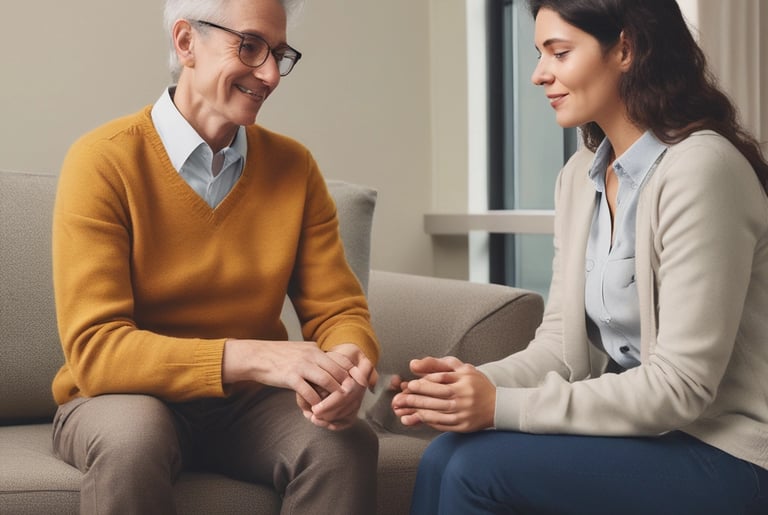

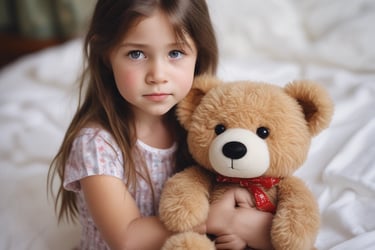

What is Grief Counselling?
Person-Centred Counselling
A gentle, non-judgmental space where the child or young person leads the conversation, supported by a warm and understanding therapist.
Cognitive Behavioural Therapy (CBT)
A practical, goal-based approach that helps change unhelpful thoughts and behaviours. Tasks may be given between sessions.
Systemic Family Work
Whole-family sessions that explore relationship dynamics and help everyone feel heard and supported.
Emotional Freedom Technique (Tapping)
A calming technique that uses tapping on pressure points to release emotional blocks and reduce anxiety or distress.
Complicated Grief Support
When grief feels stuck or overwhelming, we help “unblock” the process and gently support natural healing — especially after traumatic loss.


What Therapies Do We Use?
We use a range of therapies, based on the child or family's age, needs, and situation. Our approach is flexible and personalised.
What Techniques Do We Use and Why?
Grief psycho-education
Memory Work
Examples: Memory box, sand jar, cards, scrapbook
Children can keep special items that remind them of the person who died.
Helps them hold on to memories and feel connected.
[Photo: Memory jar]
Creative Activities
Examples: Body map, feelings drawings
Children express through art when they can't find words.
Helps release emotions and share their story.
[Photo: Drawing or feelings activity]
Self-Care Work
Examples: Emotional first aid kit
Children learn how to comfort and look after themselves.
Builds resilience and helps manage grief day to day.
[Photo: First aid kit or self-care items]
Self-Esteem Work
Examples: Confidence journal, core beliefs sheet
Grief can shake a child’s sense of self and safety.
Supports confidence, control and hope for the future.
[Photo: Journal or activity worksheet]
Relaxation Techniques
Examples: Mindfulness, breathing, ‘giggle spray’
Grief causes stress and tension in the body.
Relaxation eases anxiety, helps with sleep and physical symptoms.
[Photo: Giggle spray or calm space]


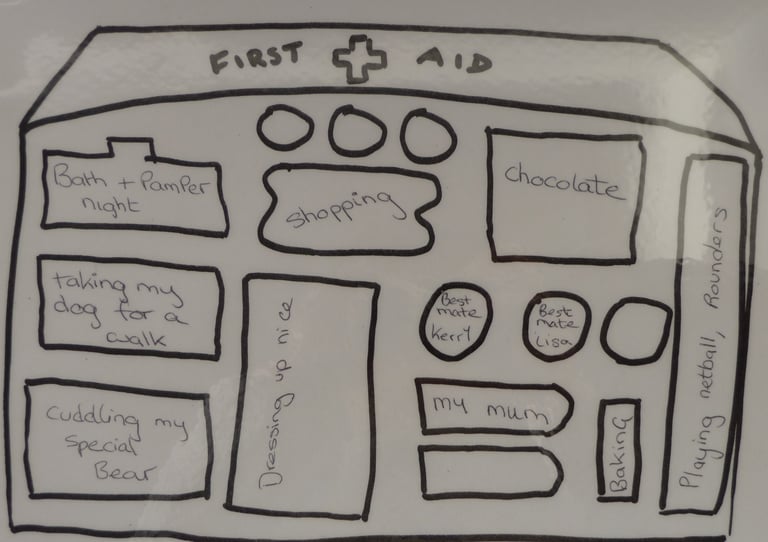

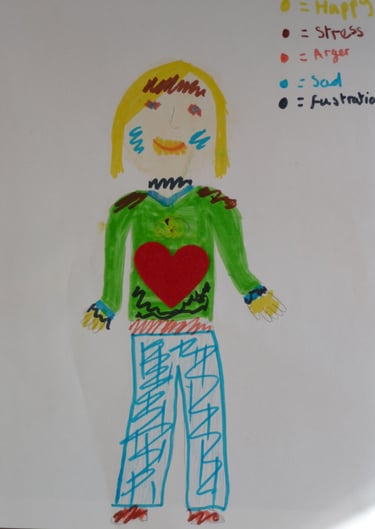

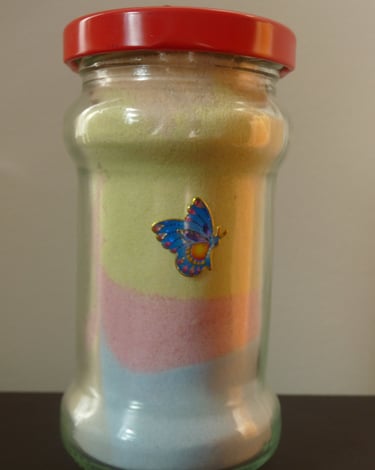

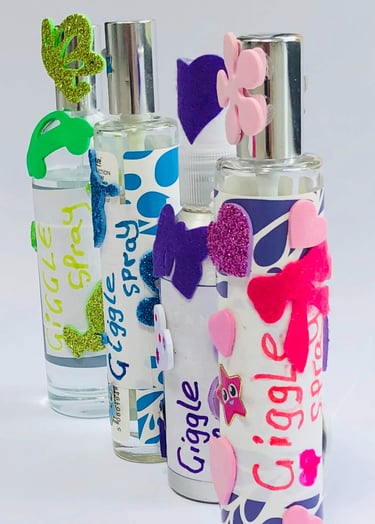

Examples: 5 Stages of Grief (Kubler-Ross), Whirlpool of Grief, and Rollercoaster of Grief. To help children, adults and families understand and navigate their grieving journey.
This helps normalise grief and shows that feelings change and shift over time.
[Photo: Whirlpool diagram]
